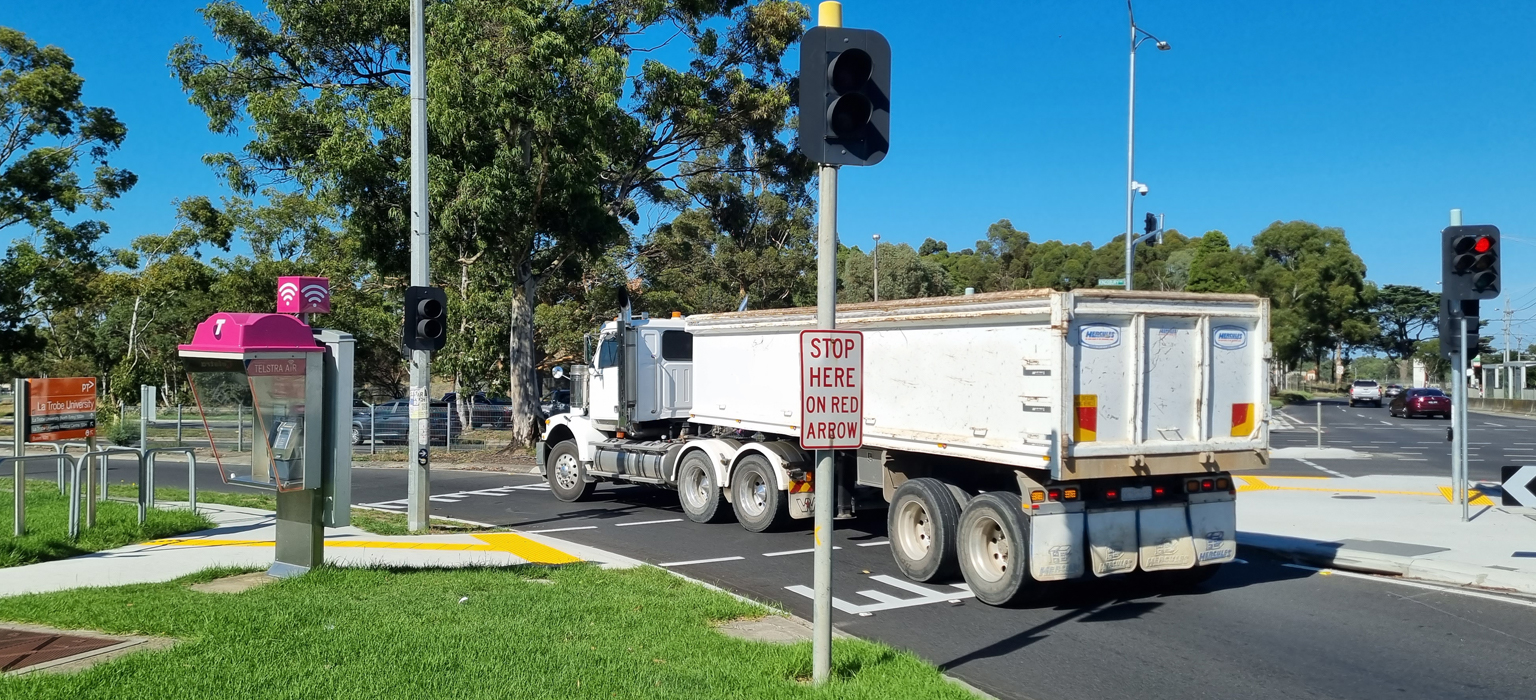Truck Safe Speed Assessments
Heavy vehicles with high centre-of-gravity loads are most prone to rollover when turning at speed. Therefore, road agencies and designers must pay extra attention when designing turns and intersections. Because of this, Advantia is regularly engaged to determine the safety of intersection designs for trucks and advise on how to best mitigate any risks around rollover.

The safe speed of trucks performing turning manoeuvres is determined using advanced computer simulation of heavy vehicles with road geometry that can either be taken from a design or from real world measurements of the slope and elevation profile of roads.
Driving a heavy vehicle over the road in the simulation environment quantifies how safe it is for heavy vehicles. Usually, a measure called Load Transfer Ratio (LTR) is used which measures how balanced the axles are from one side to the other. An LTR of 0 means that the axles are balanced (i.e. the truck is perfectly stable) while an LTR of 1 means that all the load is on one side of the truck, and it has or is about to rollover! Usually, an LTR of no more than 0.6 is considered safe for intersections.
In assessing roads for truck stability, there are generally three main factors which account for vehicles rolling over; speed, turn radius and crossfall and camber.
Speed
Speed is by far the largest reason that trucks roll over. When turning, all vehicles are prone to centripetal forces which act as a lateral force on the vehicle trying to push it over. The problem is that these rollover forces grow exponentially with speed. If speed is doubled, the roll over force is quadrupled! This means that even small changes like a 10 km/h difference can have a large impact on how stable a vehicle is. This is especially important for trucks with high and heavy loads which is why close attention to what speeds are safe is necessary.
Turn radius
Turn radius, or how tight a turn is, has a big impact (although not as large as speed) on the stability of trucks. Smaller tighter turns require vehicles to slow down more for safer intersections. Unfortunately, in many designs the geometry is largely constrained and so it’s not a factor that can be influenced, nevertheless it has a large impact on the overall safety.
Crossfall and camber
Crossfall and camber refer to the slope of the road and are an extremely important part of the way that roads are designed. Without a slope to the edges of the road water wouldn’t drain off quickly when it rains. Camber is also present on highways when turning so that the road slopes inwards when driving to increase the stability of vehicles operating at speed. The problem occurs where crossfall and camber are at odds. If a design has a right-hand turn but crossfall is needed sloping down to the left there is a negative crossfall situation. In these cases, the crossfall acts as negative camber and actually makes the stability worse during a turn.
Beyond these three factors other considerations include ‘bumps’ in road, such as a Raised Safety Platform (RSP) or a wombat crossing. Sudden changes in the road elevation for trucks (especially when turning) can have a destabilising effect and increase their propensity for rollover.
For this specific reason, Advantia recently assisted the Victorian Department of Transport on a design for an intersection upgrade at La Trobe University in Bundoora. The upgrade had raised pedestrian crossings in a slip lane for students, but there were some questions around what this would mean for trucks making the turn from Plenty Rd onto Kingsbury Drive.
Advantia assessed the turn taking into account the speed, turning radius, crossfall and also the pedestrian crossing to provide input on the advisory speed signage since installed. Drivers of high centre-of-gravity loads can now be warned and informed of how-to best manoeuvre through this upgraded slip lane.

For more information about this project or others like it please contact Advantia.
Get more like this in your inbox
Subscribe to our Newsletter and never miss a post.